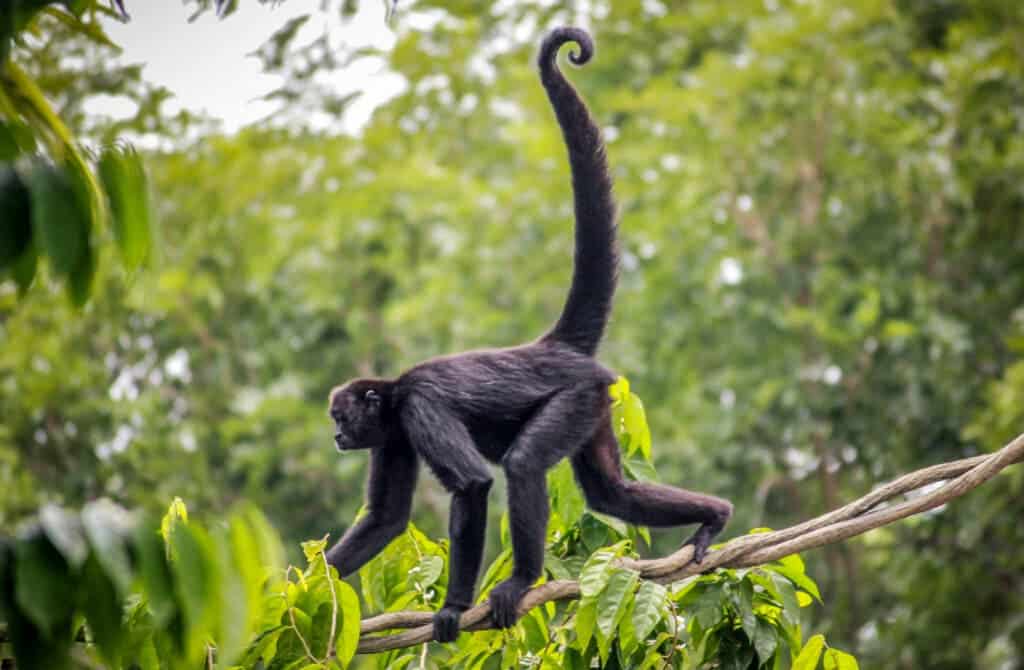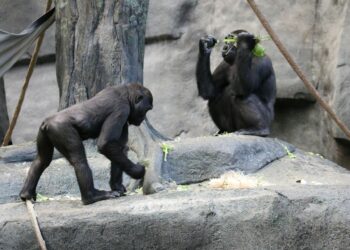
Tails are almost a standard accessory in the animal kingdom, and for good reason too. Fish rely on their tails for propulsion, cows use them as fly swatters, crocodiles store fat in them, and monkeys rely on tails for balance and even to grip things with them. Humans actually have a tail too as embryos, however, it regresses into fused vertebrae becoming the coccyx, also known as the “tailbone”.
This tailbone is actually proper evidence that somewhere in our evolutionary journey something happened that made us lose our tails. We’re not alone either. Humans belong to a group called great apes, and along with gorillas, orangutans, chimps, and bonobos, none of us have tails. The lesser apes like gibbons don’t have tails either. What gives?
If you’re sorely missing your tail, you may have a pesky mutation to blame, according to a 2021 study that appeared in the preprint server bioRxiv.
Where’s my tail?
The oldest known primate fossils are around 66 million years old, around the same time the dinosaurs went extinct. These ancestors had full-fledged tails that were likely handy when living in canopies. The utility of this flexible body part can be attested to by the fact that even after all these years, most living primates and the vast majority of monkeys still sport a tail.
On the other hand, by the time Proconsul, the most primitive ape that is well-known from a fossil skeleton, appeared some 20 million years ago, it had no tail at all.
Why exactly humans and their closest relatives lost their tails has been a matter of debate for some time. What biologists have noticed is that apes can walk with upright stances thanks to a shorter lumbar region enabled by the absence of the tail. Meanwhile, new world monkeys use all fours.
As such, the loss of the tail can be seen as an adaptation to a particular environment, which allowed our ape ancestors to leave trees and walk on the ground. With some adjustments, early humans could not only walk but jog over the grassland.
Bo Xia, a graduate student in stem cell biology at N.Y.U. Grossman School of Medicine, has always been curious about why humans lack tails. Being a scientist, he decided to answer this question himself, or at least attempt to, by zooming in at the molecular level.
Xia and colleagues started their journey by studying how tails form in animals that sport them. He found that early in the embryo’s development, some genes switch on that instruct stem cells to develop into vital skeletal structures, such as the neck, lumbar region, and eventually a chain of vertebrae and muscles that form the tail.
According to the researchers, we know of about 30 genes that are fundamental to tail development in various species. When they compared the DNA of six species of tailless apes to nine species of tailed monkeys, the scientists found a mutation shared by apes and humans but missing in monkeys.
The mutation affects a gene called TBXT, which is interestingly enough one of the first genes ever discovered more than a century ago. The mutation found by Xia is found in the middle of the TBXT gene and is virtually identical in humans and other apes.
Back in the lab, the researchers genetically engineered mice that had the TBXT mutation. Lo and behold, many embryos lacked a tail while others grew a very short, stumpy one.
“We propose that selection for the loss of the tail along the hominoid lineage was associated with an adaptive cost of potential neural tube defects and that this ancient evolutionary trade-off may thus continue to affect human health today,” the researchers wrote.
About 20 million years ago, an ancient ape was born with this mutation and reproduced significantly more thanks to it — rather than in spite of it — passing it on to offspring. Eventually, the TBXT mutation became a defining feature of the ape genome — and it’s likely not alone.
The genetically engineered mouse embryos developed a range of altered short tails. The human tailbone, however, basically looks identical across individuals, suggesting other mutations may be involved in its development.
So if you ever wondered “Dude, where’s my tail?” you can now point your finger at TBXT.






